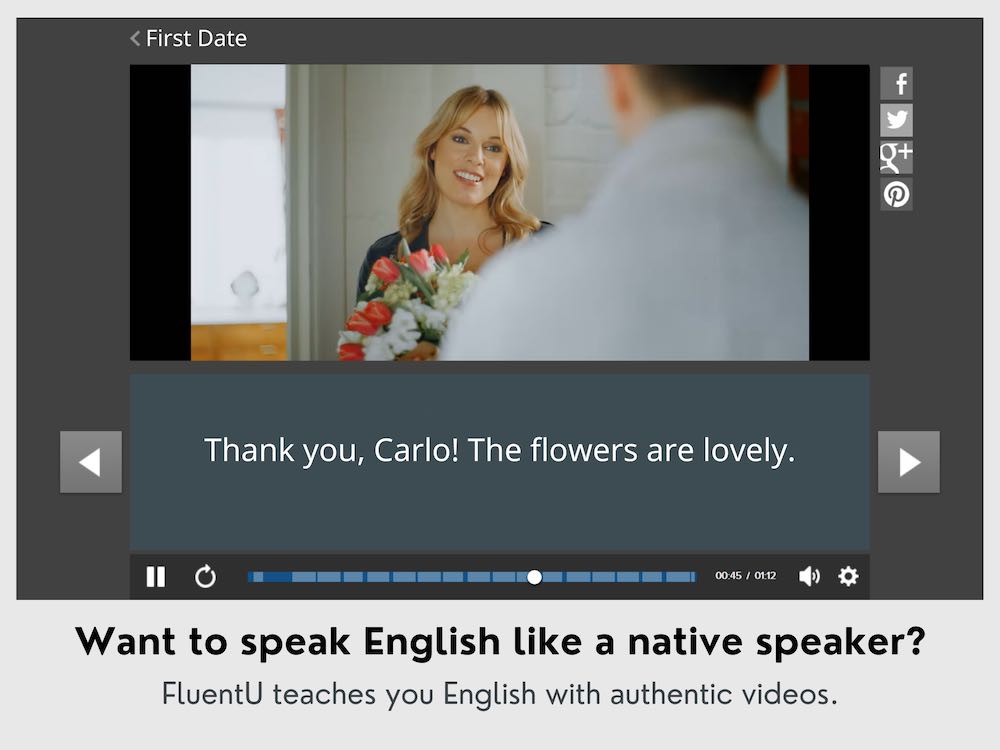
7 Types of English Spoken Around the World
For the sake of learning English, wouldn’t it be great if everyone sounded exactly like Siri?
Unfortunately for English learners, native speakers around the globe all have their own unique ways of speaking. There are dozens of accents, slang words and varieties of English in the world, which can make it difficult to understand them all.
But have no fear because in this post, we’ll show you the seven types of English you should become familiar with.
Contents
- North American English
- British English
- Scottish English
- Irish English
- Australian English
- New Zealand English
- Singlish
- And One More Thing...
Download: This blog post is available as a convenient and portable PDF that you can take anywhere. Click here to get a copy. (Download)
North American English
The North American English variety is spoken mainly in the United States and in Canada. Since so many movies and television shows are produced here, many around the world know the “American accent” well—think “Friends.” But in reality, there are several regional varieties and accents of North American English.
The Canadian variety of North American English uses some unique words and sounds such as:
- “Toque” is used for a knitted beanie type hat.
- “Eh?” is added after many questions for emphasis.
- “About” pronounced like “aboot.”
Some United States accents include the lack of hard T sounds in words like “butter” and “water,” so “budder” and “wadder.” The American accent is also known for its full pronunciation of /r/ sounds, in words like “water” and “river.”
Let’s look at some words you’re likely to come across in North America and nowhere else:
- Bangs (hair fringe)
- Dude/Bro (friend)
- Pants (for trousers)
- Antsy (impatient)
- Cool (adjective meaning good)
Resources to Learn North American English:
- The U.S. Department of State: Students who want more exposure to American English can visit this website for ESL resources and information about study abroad programs.
- American English Podcast: This podcast, which helps learners of American English, also include an extensive list of other resources to get more comfortable with North American English.
- FluentU: This language learning program relies on native English videos to teach English. You’ll find many videos here that use American English, as well as examples of English from all over the world.
FluentU takes authentic videos—like music videos, movie trailers, news and inspiring talks—and turns them into personalized language learning lessons.
You can try FluentU for free for 2 weeks. Check out the website or download the iOS app or Android app.
P.S. Click here to take advantage of our current sale! (Expires at the end of this month.)

- “Accent Expert Gives Tour of U.S. Accents”: This video below from Wired highlights the main accents of the United States.
British English
British English is a world onto itself, because the British Isles have literally hundreds of accents, some as specific as being from part of one city or unique to one small town. Even though all varieties of English on earth came from Britain originally, many people now find this English the strangest because of its abundant slang. If you’re wondering about the differences between British and American English, check out this post.
British English sometimes features different spelling compared with American English, e.g. “colour” instead of “color” and “centre” instead of “center.”
The so-called standard British accent is Received Pronunciation (RP), also known as “BBC English” or “Queen’s English,” is often associated with prestige and with the southeast of England.
However, regional accents, such as Cockney in London or Geordie in Newcastle, are also prevalent and add to the linguistic diversity of British English.
Let’s look at some words you’re likely to come across in Britain and nowhere else:
- Fit (attractive)
- Loo (toilet)
- Knackered (tired)
- Quid (one British pound)
- Snog (kiss)
- Naff (lacking in style; bad taste)
Resources to Learn British English:
- BBC Learning English: This enormous British English learning portal is sponsored by the British Broadcasting Company, a worldwide leader in news reporting. Here they have news, podcasts, quizzes and videos.
- British Council: The website of the British Council, called “Learning English,” has lots of learning content, audio and video lessons, plus exercises and games to get your British English learning going well.
- “Speak English Confidently and Fluently!”: The video below features a helpful guide to pronouncing British English.
Scottish English
Scottish English is spoken in—you guessed it—Scotland, which is part of the United Kingdom, but something of a world onto itself. Scottish English is notorious because it’s often very hard to understand for non-Scottish people.
Listen to “300” star Gerard Butler speaking in his neutral Scottish accent (video below) and compare that to this thick Scottish Glaswegian accent. As you can see, there’s a big difference between the two!
The good news is that you’re far more likely to encounter Scottish speakers like Gerard Butler than the other speaker.
Many Scottish speakers like to throw in Scots words, which are unique only to Scotland. That’s why even some native speakers can have trouble with a thick Scottish accent.
Let’s look at some words you’re likely to come across in Scotland and nowhere else:
- Braw (great; awesome; fantastic)
- Tidy (a positive description similar to beautiful; stunning; lovely)
- Balloon (someone annoying or dim-witted)
- Bucket (trash can)
Resources to learn Scottish English:
- “Say It Like a True Scotsman”: A phrasebook of uniquely Scottish English terminology.
- Scots Tongue: A comprehensive guide to Scottish pronunciation, slang, expressions and more.
- “Gerard Butler on his Scottish Accent”: This video (below) features the actor discussing his accent.
Irish English
As its name indicates, Irish English is spoken by the people of the Republic of Ireland and the British region of Northern Ireland.
One of the most recognizable features of Irish English is that the “th” sound (like in thousand) is pronounced with a “t” or a “d.”
Let’s look at some words you’re likely to come across in Ireland and nowhere else:
- Shebeen (bar/pub)
- Craic (literally means crack, but when people ask you, “what’s the craic?” they’re asking “how are you?”)
- Gob (mouth — Can be used as a light insult, like “shut your gob.”)
- Eejit (idiot, but in Irish pronunciation)
Resources to learn Irish English:
- “Irish Language and Culture” by Lonely Planet: You may have heard of Lonely Planet, one of the biggest and most reliable sources for traveler information. They make guidebooks for almost anywhere you’d want to visit, written by experts with firsthand knowledge of the locations.
This book will teach you key vocabulary and expressions you’ll hear in Ireland. There are chapters on sports, food and even misunderstandings.
When you’re done, grab a Lonely Planet guide for any other destination that interests you!
- “The Accents of Ireland”: A helpful video guide to the accents of Ireland.
Australian English
Australian English is becoming one of the more popular versions of English as people from nearby countries like China and South Korea move to Australia to study it.
One of the fastest ways to sound Australian is to use long vowel sounds. Here’s a guide to basic vowel sounds you’ll hear in Australia.
The slang in Australia is especially unique. Australians like to abbreviate everything!
Let’s look at some words you’re likely to come across in Australia and nowhere else:
- Bogan (an unsophisticated person)
- Mozzie (mosquito)
- Whinge (whine)
- Servo (gas station)
Resources to learn Australian English:
- “Lonely Planet Australian Phrasebook”: Another helpful phrasebook from the pros at Lonely Planet.
- ABC Radio Australia: Students interested in learning Australian English can visit this site for stories, videos and activities designed to boost English proficiency.
- “How To Speak Australian”: Learn tons of Australian slang abbreviations with these funny YouTubers.
New Zealand English
Also known as the Kiwi accent, New Zealand English is one of the more neutral versions of English out there. While distinctly different from British English, many ESL students who are used to Received Pronunciation don’t have a problem with the Kiwi accent.
Just like its neighbor, Australia, Kiwi English is filled with a lot of slang phrases that you probably won’t find in many English speaking countries outside of Oceania.
Let’s look at some words you’re likely to come across in New Zealand and nowhere else:
- Jandals (flip flops)
- Chilly bin (a cooler used to keep your drinks cold)
- Sweet as (an expression meaning no problem; alright)
- Hardout (used to amplify an adjective — “It’s hardout hot today!” means “It’s very hot today!”)
Resources to learn New Zealand English:
- “Personal Kiwi-Yankee Dictionary for the New Zealand Traveler”: A dictionary-style book that explains New Zealand vocabulary in terms of Standard English.
- English Language Partners New Zealand: An immigration website that’s filled with information and resources to help with learning English.
- “KJ Apa Teachces you New Zealand Slang”: This comedic video by Vanity Fair features the popular Riverdale actor.
Singlish
English is one of four official languages in Singapore and is commonly used in local and international business in the country. What makes Singaporean English, also known as Singlish, different from other versions of English is that it’s been influenced by other languages in the country.
For outsiders, Singlish can be difficult to understand. Many of the words and expressions used in Singlish actually come from other languages, like Mandarin Chinese, Malay and Tamil. And for this reason, many English-speaking Singaporeans speak standard English and Singlish.
Let’s look at some words that you’ll only find in Singlish:
- Lah/la (a filler word used for emphasis that can have a lot of different meanings, depending on the context)
- Lepak (to walk around aimlessly)
- Heck it (used when you don’t care about something)
- Sia la (an exclamation similar to “wow” or “oh my God!”)
Resources to learn Singlish:
- “The Singapore English”: A pocket dictionary for common Singlish terms you’ll hear in Singapore.
- “International Accent vs. Singlish Accent”: A YouTuber teaches the difference between standard English and Singlish.
As you can see, there are a lot of different types of English spoken around the world–each with its own slang, pronunciation and style that make them unique.
While getting used to a different type of English can be difficult in the beginning, with a little bit of practice (“practise” in British, New Zealand, Irish, Scottish and Aussie English), you’ll be able to visit any English speaking country and chat with the locals like a native!
Download: This blog post is available as a convenient and portable PDF that you can take anywhere. Click here to get a copy. (Download)
And One More Thing...
If you like learning English through movies and online media, you should also check out FluentU. FluentU lets you learn English from popular talk shows, catchy music videos and funny commercials, as you can see here:
The FluentU app and website makes it really easy to watch English videos. There are captions that are interactive. That means you can tap on any word to see an image, definition, and useful examples.
For example, when you tap on the word "searching," you see this:
Learn all the vocabulary in any video with quizzes. Swipe left or right to see more examples for the word you’re learning.

FluentU helps you learn fast with useful questions and multiple examples. Learn more.
The best part? FluentU remembers the vocabulary that you’re learning. It gives you extra practice with difficult words—and reminds you when it’s time to review what you’ve learned. You have a truly personalized experience.
Start using the FluentU website on your computer or tablet or, better yet, download the FluentU app from the iTunes or Google Play store. Click here to take advantage of our current sale! (Expires at the end of this month.)











